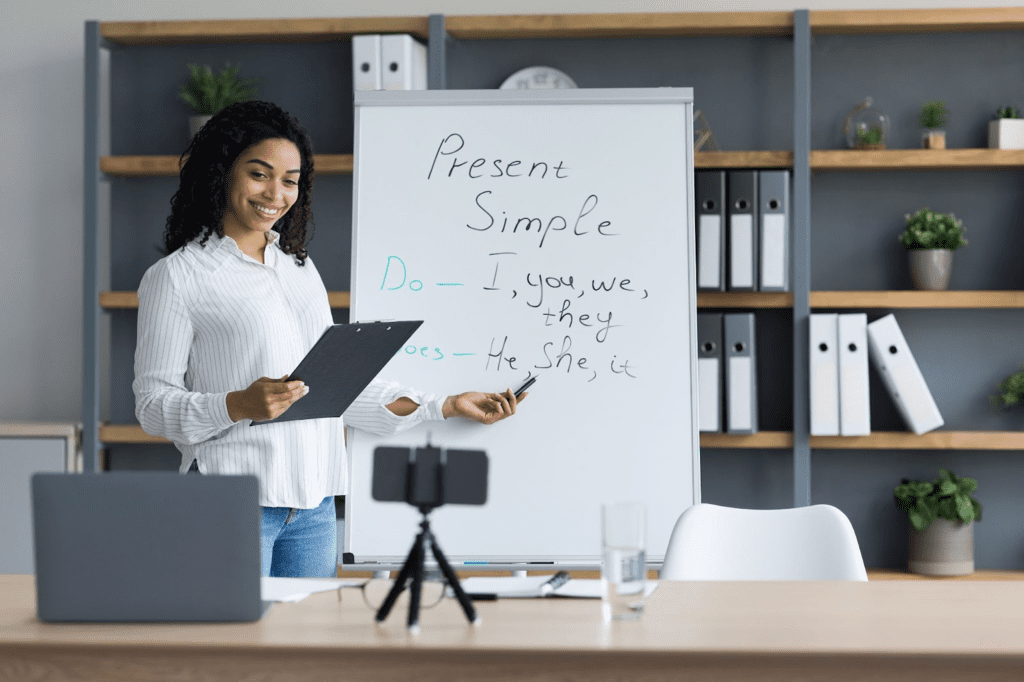You Won’t Find These 10 Tips for Teaching ESL Elsewhere
Do you have experience teaching English as a second language? Whether you are just starting or have been teaching for years, these twelve tips will help you create lessons that engage your students and help them learn the language. These ideas will help you make your ESL classes enjoyable and productive, from using games to keeping things interesting.
1. Keep learning activities short and sharp
It might seem like adding more content will help students learn more, but this is not true. By keeping learning activities short and sharp, there’s a greater chance that students will remain motivated.
Use the first 10 minutes. It’s best to start with a high-energy, warm-up activity to get your students engaged in the lesson right away. This will give your students a chance to ‘draw a line’ between what they were doing before the class started and what they’ll do during the class.
Grammar is your friend. Make sure to mention grammar throughout the lesson. Try not to overwhelm students with too many new grammar rules at once. If you keep a few basic grammar rules in mind, the rest will fall into place naturally.

2. Use games and other activities
Don’t spend all of your time in front of the board! Instead, use fun games and activities to help students learn their English vocabulary, grammar, and sentence structure. Not only will this keep your class more interesting, but it will also ensure that students work with the language in a meaningful manner.
3. Keep students engaged and entertained
Put yourself in your students’ shoes: if you were taking an English class, would you want to spend all your time watching videos? Probably not! Instead, use multimedia such as songs and short films to help change it up and keep students entertained.
4. Try out new methods of teaching
Never stop looking for new and effective ways to teach your students. The best way to do this is to make sure you understand the different ways in which students learn. Some students work well with an auditory learning style, while others need a more visual approach and suchlike.
Use real-life scenarios in your lessons. We all know that the best way to learn a language is by using it. While this is true, many students are scared that they won’t use what they learn in class outside of it. You can combat this thinking by identifying fun and engaging ways to use the language outside the classroom and share your ideas with students.
5. Use specific language-learning strategies
To ensure that your students are successful English learners, be sure to teach them specific language learning strategies. These will allow your students to apply the skills they’ve learned in class, outside of it. Some useful approaches include the following:
– Using mnemonic devices to learn new words
– Learning words in context
– Making eye contact with others when speaking
6. Challenge your students
Use games to teach new vocabulary and challenge your students with more difficult questions. This will help them learn the language and test their understanding of it simultaneously!

7. Use visuals and gestures
Use visuals and gestures to help them understand the language in context, which will make it easier for them to put their new skills into practice with others.
8. Keep it simple
Use simple words and phrases to help students better grasp instructions and the target language. Keep your ‘teacher talk time’ to the absolute minimum.
9. Go with an English only ‘rule’ in the classroom
The research is crystal clear. The best way to build English language skills is for your students to use the skills that have – and continually build upon them. Use of the native language in an ESL class should be actively discouraged.
10. Don’t forget about pronunciation
When pronouncing words, make sure to use correct stress, tone, and intonation. This is especially important when speaking with your ESL students because it can be harder to understand the language if you aren’t speaking clearly. For example, when teaching English learners about phrasal verbs, it’s important to stress the correct syllable when saying words such as “turn off.” Also, whenever you emphasize a word or phrase in your sentence, make sure to use the correct tone of voice.
Conclusion
English as a second language can be difficult to learn, but it can be a fun and rewarding experience with the right techniques. These ten tips will help you make the most of your lessons and keep your students engaged and interested in learning.
About the writer: KC Raj is a career counsellor and recruiter with many years of experience. Interested in topics like human development, education, immigration, inequality, and many other international issues. Reachable at: https://www.linkedin.com/in/kc-raj-kcr/

Recent Comments